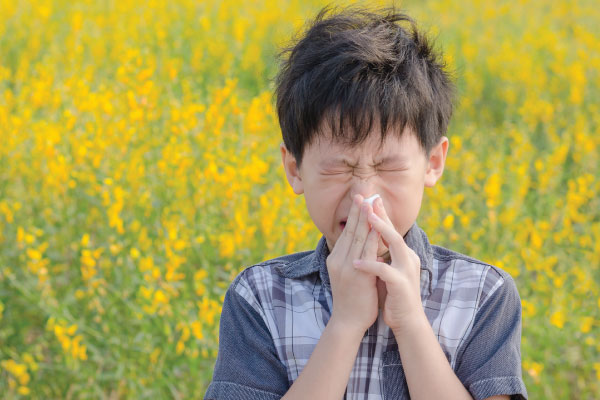Pediatric Allergic Rhinitis in Atlanta, GA
Rhinitis occurs when allergens in the air trigger histamine release in the body. Histamine causes itching, swelling, and fluid in the fragile linings of nasal passages, sinuses, and eyelids.
Allergic rhinitis is seasonal or year-round and occurs more often in younger children with a family history of allergic rhinitis.
What are the causes of allergic rhinitis in children?
The most common causes or triggers of allergic rhinitis in children are:
- Pollen from trees, grass, or weeds
- Dust mites
- Mold
- Cockroach droppings
- Pet dander
- Tobacco smoke
What are the symptoms?
The most common symptoms of allergic rhinitis may include:
- Sneezing
- Stuffy nose
- Runny nose
- Itchy nose, throat, eyes, and ears
- Nosebleeds
- Clear drainage from the nose
Children with year-round allergic rhinitis may exhibit these symptoms:
- Recurring ear infections
- Snoring
- Breathing through the mouth
- Changes in school performance
- A line or crease across the bridge of the nose from swiping the nose
How is allergic rhinitis in children diagnosed?
Your Pediatric ENT provider will complete a physical exam, including medical history. The provider will examine the ears, nose, throat, and eyes. The provider may determine that an allergy test is needed to identify the various triggers of allergic rhinitis.
How is allergic rhinitis treated?
While every case is different, standard treatments for rhinitis include:
- Antihistamines nasal sprays
- Decongestants
- Asthmatic medicine
- Allergy shots
Expert Pediatric ENT Care for Rhinitis in Atlanta, GA
Our skilled pediatric ENT specialists in Atlanta are committed to delivering comprehensive,child-friendly care for conditions like rhinitis and other ear, nose, and throat issues. Serving families across the greater Atlanta area, we offer convenient locations in Alpharetta, Duluth, and Marietta. Don’t let sinusitis impact your child’s well-being – reach out to us today for expert care.


